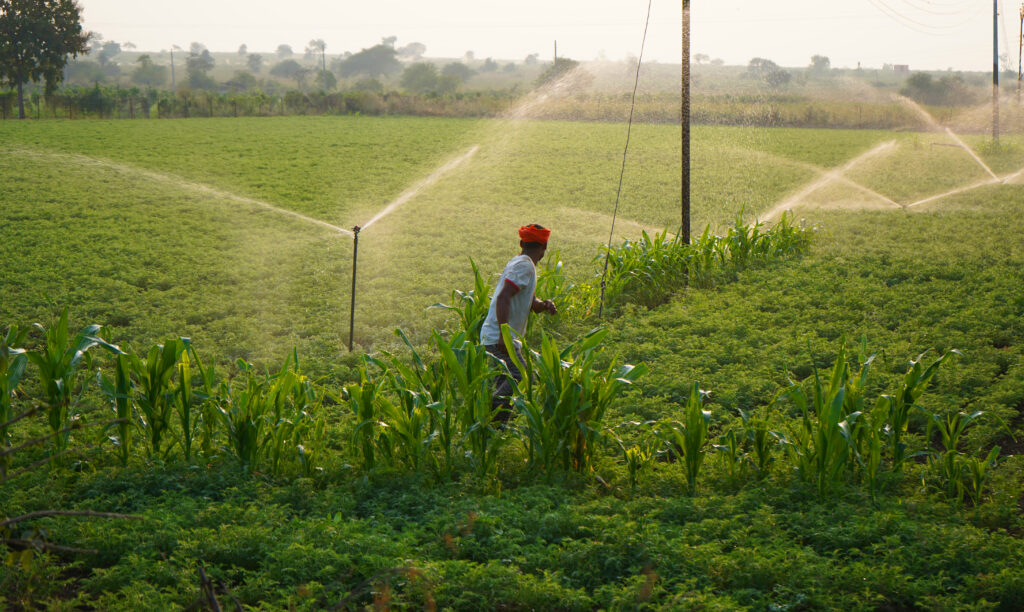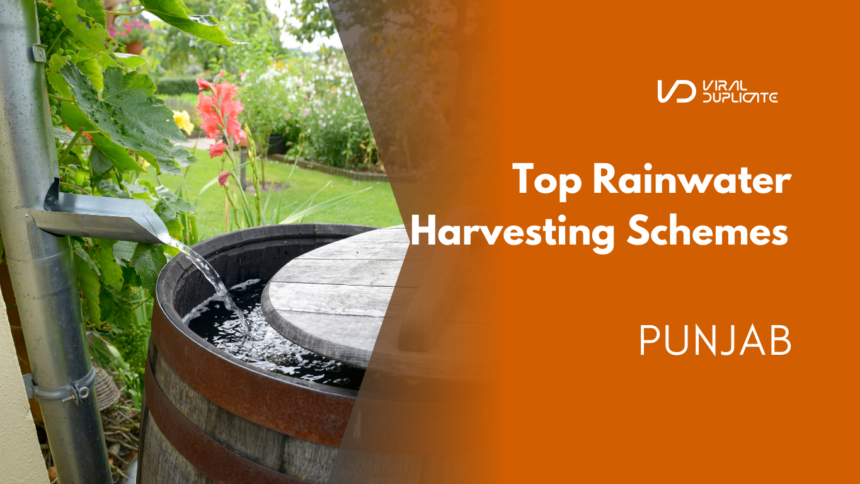Punjab’s farmers are currently in the danger of water crisis threating their feild and future. Groundwater levels recede annually, yet the rainy season’s potential to replenish this water source remains underutilized. However, farmer-oriented Punjab rainwater harvesting schemes should be in place — these would really be a great help in solving the irrigation problem in a sustainable way.
With these projects, aquifer storage is recharged, expenses are reduced, and crops are increased efficiently. Want to know how they actually do that? This guide flashes more light on the best rainwater harvesting methods for Punjab farmers and presents a good number of real stories of success as well as the basic and practical steps.Let’s explore this lifeline for agriculture.
Why Punjab Needs to Adopt Rainwater Harvesting at Present
Every year, groundwater goes down by more than half a meter, according to data from the Central Ground Water Board. Borewells in some areas have gone down to 450 feet because of the decline. At the same time, raining is too often the cause of only a small share of 650 mm monsoon rain — from June to September — running away. Rainwater harvesting is a technology that captures water suitable for agriculture.
It’s not only an environmental-friendly method, but it’s also a major tool to keep farmers alive. Through water conservation schemes worth Rs 213 crore put into action by Punjab, the state has been vigorously pursuing sustainability since 2019.
Major Rainwater Harvesting Initiatives in Punjab

What is the driving force behind these initiatives? Punjab, largely, synthesizes traditional with modern techniques. The Kandi belt area built number of more than 60 water harvesting structures. The Agency for Barani Areas Development (ABAD) constructed 500 check dams to retain water and 3,000 mini dams and ponds, each holding 40-100 acre-feet.
In addition, rooftop harvesting represents a feasible way. Farmers are collecting the rainwater run-offs from their rooftops through piping into tanks or recharge wells, increasing their water reserves by twice. The burden is being lightened by the State of Punjab Department of Soil and Water Conservation, who are covering up to 50% of the issued subsidies.
One such instance is Hoshiarpur district that has a fantastic number of check dams, while the farmers of Sangrur like to keep ponds. If you build and maintain the dam and ponds, they will continue to function for 20-30 years. Do you find it interesting? Well, let’s go through the advantages in detail.
Benefits of Schemes.
The collection of rainwater is such a big advantage. First, it reduces the costs of irrigation, leaving out the need for expensive tankers and deep borewells. A farmer from Sangrur saved Rs 20,000 per year with a pond.
Second, the yields escalate. Studies prove that increasing water stabilizes paddy and wheat outputs, boosting them by up to 40%.
Third, there is a real upturn of groundwater resource. In Patiala, water tables went from 450 feet to 200 feet in five years. Besides, the flood hazard is also nullified because the water retained by the dam goes with the excessive rainfall. For farmers in Punjab, these programs are a guarantee of the possibility of recovering the stability of the climate situation.
Read more about Punjab Dairy Farming Schemes 2025: Easy Loans & Subsidies for Farmers
Your Simple Rainwater Harvesting Guide with Actionable Steps
Ready to start? Here’s a detailed roadmap to set up the best rainwater harvesting system for your farm.
Step 1: Locate Your Farm and Rainfall Zone
Determine the drainage pattern as well as your soil type: clay can hold water, while sandy soils can drain easily. The annual rain in Punjab is 650 mm. A 5-acre farm would have the potential to harvest 12 million liters. Evaluate the natural flow zones and low points for building ponds.
Step 2: Make the Right Choice
Select the appropriate method. Mini dams would be good for a larger area of arable land (5+ acres) and their cost will be from Rs 50000- Rs 100000. Rooftop systems starting at Rs 10000 are suitable for homes near fields. ABAD is your go-to source for soil-specific guidance.
Step 3: Budget with Subsides
It is necessary to estimate the expenses for the entire period. A recharge shaft can be easily installed at a cost of 2-5 lakhs and lasts for many years. Subsidies usually range from 30-50 % and equate to Rs 15000 for ponds and Rs 1 lakh for dams respectively. Punjab soil conservation site can be visited for the availability of forms.
Step 4: Construct in a Smart Manner
The ponds should be positioned at a depth of 10-15 feet or alternatively arrange for PVC pipes for the runoff from the rooftops. Use sand filters to keep the water dirt-free. Connect to a dug well or a tank. Availing of local labor would require a fee of approximately Rs 500/day—obtain assistance through village cooperatives.
Step 5: Maintain and Be Successful
Besides free silt flowing from the pond that can be utilized as a fertilizer, you are obligated to clean the pond every year. It’s also necessary to check the condition of dams after a heavy rain. But above all, it is extremely important to gently measure water levels on a routine basis.
Real Stories, Authentic Examples
It is stories that encourage. In Sandharsi, Patiala, Harmesh Singh has a half-acre pond that stores 37 lakh liters which irrigates 13 acres of paddy, a saving of Rs 25,000 every year. Apart from him, there were fifteen other families who did the same without any external financial help. The story of Sukhdev Kaur from Hoshiarpur is that of a rooftop system that has made a borewell redundancy, and she now uses it only half of its capacity. Such successes are the best proof of the efficiency of rainwater harvesting for a Punjab farmer.









